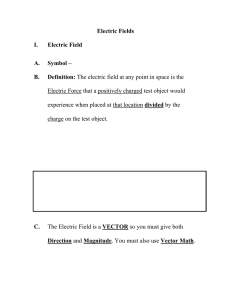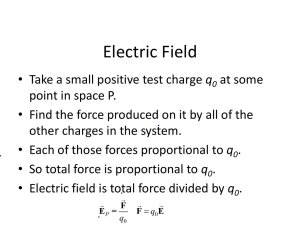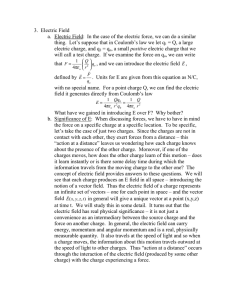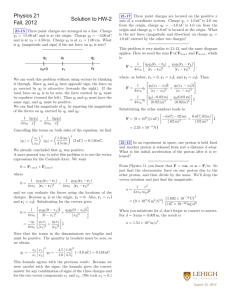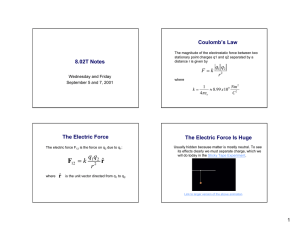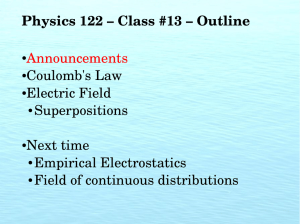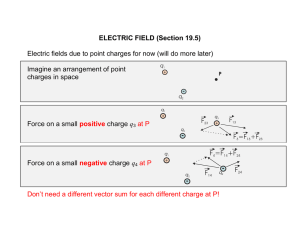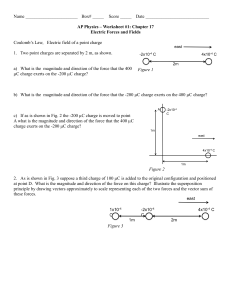ELECTRIC FIELD LINES
advertisement
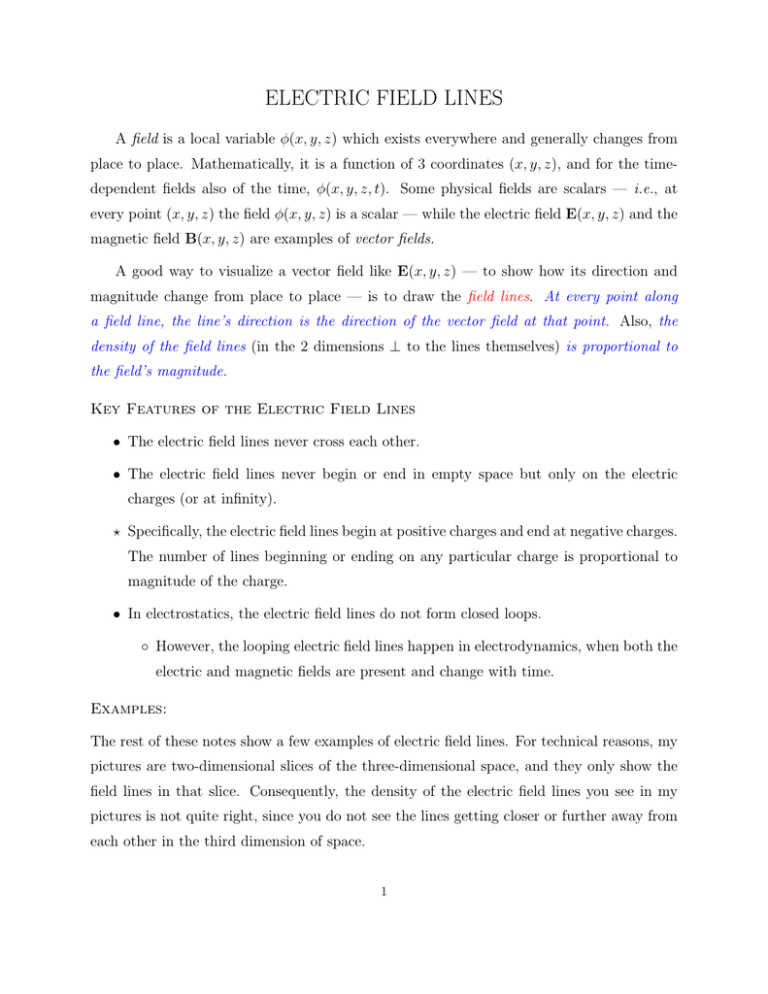
ELECTRIC FIELD LINES A field is a local variable φ(x, y, z) which exists everywhere and generally changes from place to place. Mathematically, it is a function of 3 coordinates (x, y, z), and for the timedependent fields also of the time, φ(x, y, z, t). Some physical fields are scalars — i.e., at every point (x, y, z) the field φ(x, y, z) is a scalar — while the electric field E(x, y, z) and the magnetic field B(x, y, z) are examples of vector fields. A good way to visualize a vector field like E(x, y, z) — to show how its direction and magnitude change from place to place — is to draw the field lines. At every point along a field line, the line’s direction is the direction of the vector field at that point. Also, the density of the field lines (in the 2 dimensions ⊥ to the lines themselves) is proportional to the field’s magnitude. Key Features of the Electric Field Lines • The electric field lines never cross each other. • The electric field lines never begin or end in empty space but only on the electric charges (or at infinity). ⋆ Specifically, the electric field lines begin at positive charges and end at negative charges. The number of lines beginning or ending on any particular charge is proportional to magnitude of the charge. • In electrostatics, the electric field lines do not form closed loops. ◦ However, the looping electric field lines happen in electrodynamics, when both the electric and magnetic fields are present and change with time. Examples: The rest of these notes show a few examples of electric field lines. For technical reasons, my pictures are two-dimensional slices of the three-dimensional space, and they only show the field lines in that slice. Consequently, the density of the electric field lines you see in my pictures is not quite right, since you do not see the lines getting closer or further away from each other in the third dimension of space. 1 A positive point charge 7 6 5 4 3 2 1 0 -1 -2 -3 -4 -5 -6 -7 -8 Note: the density of electric field lines on this picture appears to behave as 1/r, but in 3D the density of lines is proportional to 1/r2 , in agreement with the 1/r2 behavior of the electric field. 2 A negative point charge 7 6 5 4 3 2 1 0 -1 -2 -3 -4 -5 -6 -7 -8 3 Two equal positive charges 7 6 5 4 3 2 1 0 -1 -2 -3 -4 -5 -6 -7 -8 4 A dipole 7 6 5 4 3 2 1 0 -1 -2 -3 -4 -5 -6 -7 -8 5 Two charges of +2 : −1 ratio 7 6 5 4 3 2 1 0 -1 -2 -3 -4 -5 -6 -7 -8 6 A quadrupole 7 6 5 4 3 2 1 0 -1 -2 -3 -4 -5 -6 -7 -8 7 A rosette of six alternating charges 7 6 5 4 3 2 1 0 -1 -2 -3 -4 -5 -6 -7 -8 8 A linear quadrupole 7 6 5 4 3 2 1 0 -1 -2 -3 -4 -5 -6 -7 -8 9 A charge next to a metal sheet 7 6 5 4 3 2 1 0 -1 -2 -3 -4 -5 -6 -7 -8 10 A charge inside a metal sphere 7 6 5 4 3 2 1 0 -1 -2 -3 -4 -5 -6 -7 -8 11




